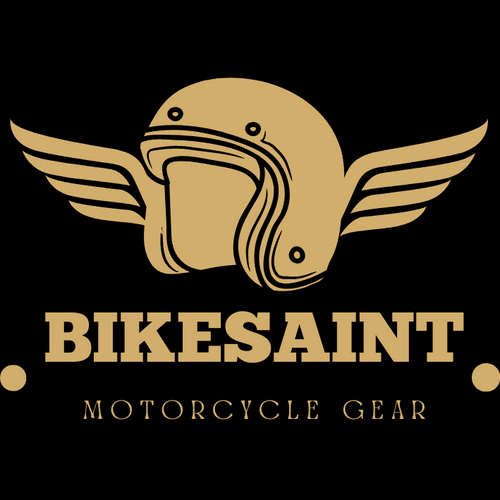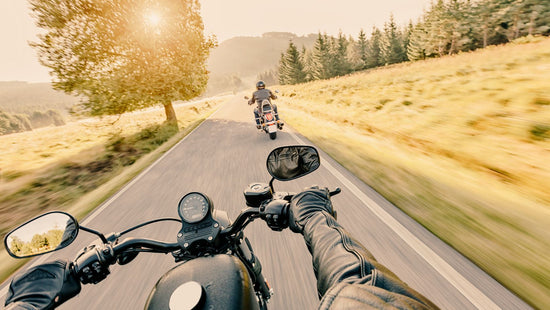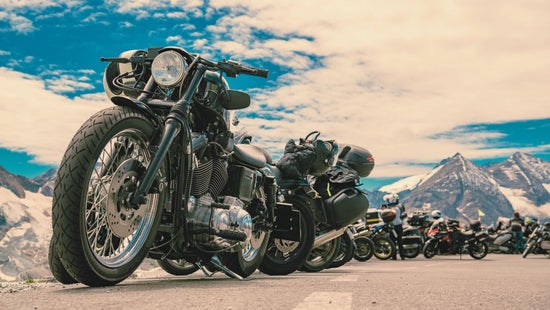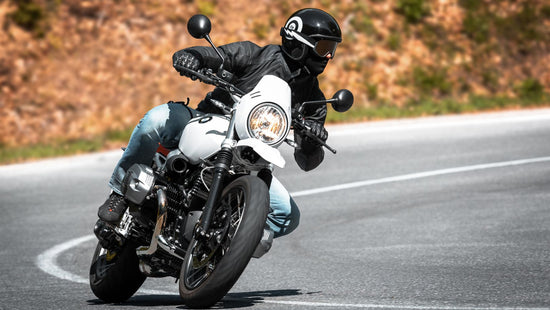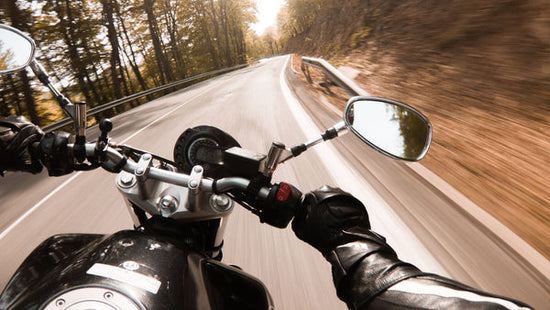

Riding a motorcycle is an exciting and thrilling experience, but what about when you have a passenger on board? Riding pillion can be a whole different ballgame, and it's important to know how to do it safely. Whether you're a seasoned rider or a beginner, carrying a passenger on a motorcycle requires a different set of skills and knowledge. In this blog post, we'll cover the basics of riding pillion, including how to do it, what to watch out for, and how it differs from riding solo. So, let's get started and learn how to ride with a passenger safely!
Introduction
What is a pillion?
A pillion is the seat on a motorcycle designed for a passenger. Hence riding pillion means riding as a passenger on a motorcycle. From the definition already, it is clear that a passenger should always ride behind the driver.
Legal requirements of riding pillion in your country or state
Check your local laws, before carrying a passenger on a motorcycle. Riding pillion is legal everywhere, but it has different conditions in different jurisdictions. Generally your motorcycle needs to be equipped with two seats, it needs to have pillion pegs, you can carry only one passenger and the passenger needs to have a motorcycle helmet on. What varies from place to place is the minimum age of the passenger. In many European countries children can ride pillion from the age of 12, but in some states in the US it is 5 or the age is not defined.
The Basics of Riding Pillion
Understanding the weight distribution and balance of the motorcycle
This is crucial when carrying a passenger on the pillion. As the weight on the back of the motorbike increases, it affects the handling and stability of the machine. Read your motorcycle’s manual, in some motorbikes it is recommended to adjust your rear suspension and tire pressure to the extra weight. Kow, that with the extra weight your motorbike will have less acceleration and braking will take longer.
Proper seating position for the passenger
Seating position of the pillion depends largely on the type of your motorcycle. Obviously your pillion will sit differently on a sport motorbike and on a large tourer. These large motorcycles provide superior comfort for the pillion and there is not much else than to sit comfortably in the armchair of the pillion seat. Riding pillion on all other motorbikes requires more effort from your passenger as many motorcycle pillion seats do not offer excessive comfort. I prefer when my pillion is close to me, as it feels better for the weight distribution and handling, when the two bodies act like one. The passenger can grip either in the back, if there are handles, or around your waist. Again, I prefer the latter, but the grip cannot be too tight and restraining, but to allow you to move and shift your body. It is important for the passengers to actively use their legs and foot pegs. The position on the footpegs must not interfere with your footpeg grip and squeezing their legs together when going down hill will prevent the passenger from sliding forward onto your back.
Importance of communication between rider and passenger
If you have a new passenger, always give instructions before you start riding. This includes agreeing on communication while riding a motorbike. A simple tap on the shoulder will do, meaning, that you should stop, unless your helmets are equipped with a bluetooth communicator.

Differences from Riding Solo
Changes in handling and maneuverability of the motorcycle
Riding with a passenger is quite different from riding solo, especially if you are not used to carrying a pillion passenger. The extra weight changes the dynamics of the motorbike, and you may need to adjust your riding style accordingly. Turning, braking, and accelerating all require more attention and effort. You may also need to adjust your speed and distance from other vehicles on the road.
Increased responsibility as the rider
First of all objectively and honestly consider your motorcycle riding skills. If you are not confident on the road or in certain situations, especially if you are a beginner motorcyclist, ask yourself if it is fair and responsible to ask someone to get on the motorbike with you. In general, if it is your first or second season riding a motorcycle, ride solo to get some experience first.
Secondly, use common sense when carrying children. Even if your local law does not regulate it or is quite benevolent, ask yourself whether it is responsible to carry small children on a motorcycle. Even if you are an expert motorbike rider, a motorcycle is always more prone to be involved in an accident and most importantly the consequences can be drastic. Children’s bodies are not fully developed, be it their bones, ligaments, joints or muscles and giving them your 4 sizes too big of a helmet won’t do much good to their head protection or neck.
How to Ride Pillion Safely
Preparing for the ride
Every time you have a new passenger, take a few minutes for a short briefing. Explain to the passenger that in order to turn, a motorcycle needs to lean and that is natural and nothing to be afraid of. Ask the passenger to either move with you and the motorbike, or do nothing at all. The worst case scenario is when the pillion leans in the other direction than you. Ask for no fidgeting as the shift of the weight can be bad in almost every situation, especially in slow speeds or when cornering. While emergency braking, it is a good idea to let go of you and push against the gas tank, so your arms do not get the full blow of the extra weight coming from the pillion forwards.
Explain to the pillion passenger how to get on and off the motorcycle. You need to have secure footing on both sides and hold the handlebars firmly in your hands applying the front brake. Ask the passenger not to get on the motorcycle putting a full weight on one of the foot pegs but rather swinging one leg around and securing the footing later. It is recommended to come from the left hand side and swing the right leg over. When getting off, ask the pillion passenger to wait again until you are in neutral and have the secure footing on both sides again.

Proper gear and equipment for the pillion passenger
Always insist on at least basic motorcycle safety gear from your passenger. This includes a helmet, jacket with protectors, gloves, firm boots and long pants. Ideally both the pants and boots should be especially designed for motorcycle riding and equipped with protectors. It does not say anything good about you, if you are fully geared and you let your pillion ride in tennis shoes and a T-shirt.
Tips for safe and smooth riding with a passenger
First of all, ask the pillion to trust you and stay relaxed. Your motorcycle riding experience will be much more pleasant, if the rider is relaxed and just flows with you and the motorcycle. There is nothing worse than a pillion holding on for their dear life and squeezing you hard will legs and arms, panicking each time you accelerate, brake or lean the motorcycle.
This trust however, you have to earn, and you will do so by riding confidently and above all smoothly. Your pillion does not have such a good view of the conditions ahead like you and does not foresee your plans. Smoothness above all is the key to keep your passenger comfortable and confident. Look ahead so you can avoid sudden braking or accelerating, try to shift quickly and smoothly without losing the momentum when shifting, since this often results in a helmet head butt.
Your pillion will have to also engage some core muscles to keep the front to back stability and moving back and forth and bumping into your helmet. If you both do this, you will have a great experience motorcycle riding in a tandem.
I also strongly suggest doing some off street practice with and without a pillion to improve your maneuvering and cornering skills.
Conclusion
In conclusion, riding with a pillion passenger on your motorcycle can be a thrilling experience, but it also comes with added responsibilities. It is important to communicate clearly with your passenger and ensure they understand the basics of riding pillion, such as how to mount and dismount the motorcycle safely.
Proper gear is crucial for both you and your passenger, so always insist on at least basic safety gear from your passenger. Smoothness is key to keeping your passenger comfortable and confident, so try to avoid sudden braking or accelerating and shift quickly and smoothly without losing momentum.
Riding confidently and smoothly will earn your passenger’s trust, allowing them to relax and enjoy the ride. Off-street practice is also highly recommended to improve your maneuvering and cornering skills.
Remember, safety should always be your top priority when carrying a passenger on your motorcycle. By following these tips and taking precautions, you can ensure a safe and enjoyable ride for both you and your pillion passenger.
What is the experience of riding pillion on a motorcycle like?
Riding pillion on a motorcycle can be an exhilarating experience for anyone. However, the experience can vary greatly depending on the rider and passenger's comfort level, the type of motorcycle, and the terrain. You'll have to rely on the rider to balance the motorcycle, navigate turns and bumps, and control the speed. It's crucial to trust the rider and communicate clearly with them. Before you get on the motorbike, make sure you're wearing appropriate gear, including a helmet, gloves, and sturdy shoes. Also, make sure the rider has a suitable passenger seat and footpegs for you to rest your feet on. Once you're on the motorbike, sit close to the rider and hold onto their waist or hips. Keep your feet firmly on the footpegs and avoid making sudden movements that could throw off the balance of the motorcycle. As a passenger, it's essential to be aware of the road ahead and anticipate any turns or bumps. This can help you avoid jerking movements that could affect the rider's control of the motorcycle.
How does the weight of a pillion passenger affect a motorcycle?
Firstly, it's important to note that having a passenger on board will increase the weight of your motorcycle. This means that your bike will take longer to accelerate and decelerate, and will generally be less maneuverable. You'll need to adjust your riding accordingly, giving yourself more time and distance to react to changes in traffic or road conditions.
How do you communicate with the driver when riding pillion?
1. Use hand signals: Hand signals are the most common way of communicating with the driver. For instance, if you want them to slow down, you can extend your right arm and move it up and down several times. If you want the rider to stop, you can extend your right arm upwards and hold it there. 2. Use intercoms: If you often ride pillion with the same rider, you can invest in a helmet intercom system. The intercom allows you to talk to the driver without needing to shout or use hand signals. 3. Tap or squeeze the rider: If you don't have an intercom or don't want to use hand signals, tapping or squeezing the rider is another way of getting their attention. For instance, tapping them on the shoulder or squeezing their thigh can mean you want them to slow down.
